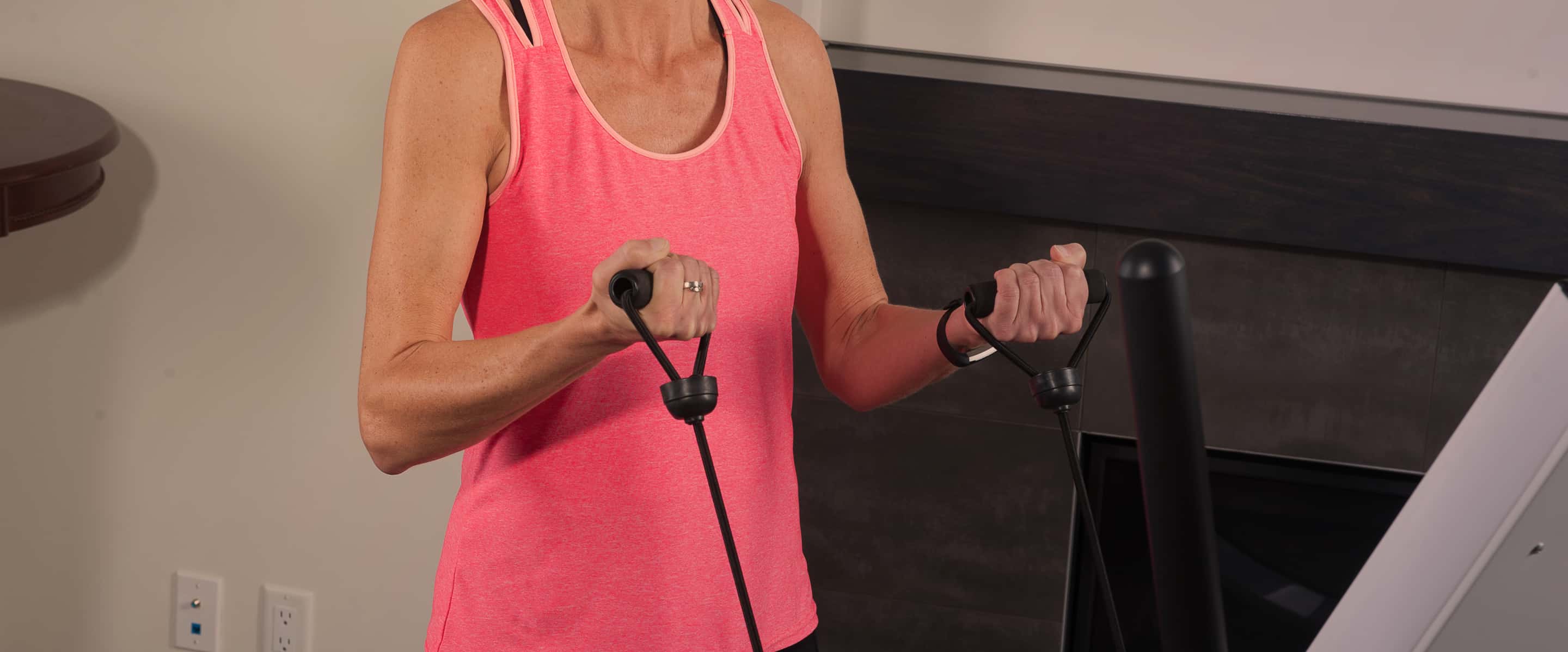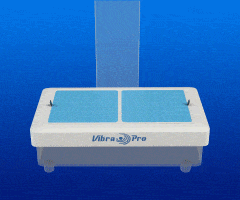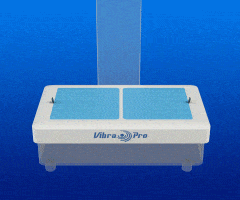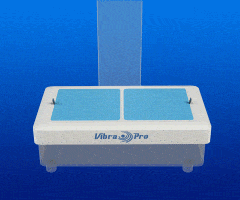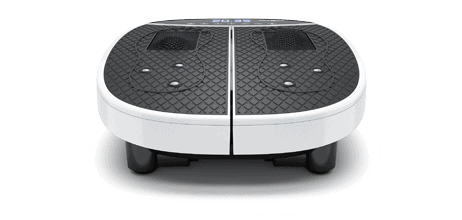Background Research and Development
With the advent of the first applications of whole body vibration machines utilized for the space programs in the 1960s, we have seen the further development and improvement of these machines, to the point now, where vibration machines have become highly sophisticated technological and mechanical marvels. Early vibration plate machines were crude units and may actually have caused more harm than good. We now recognize that there are many different forms of vibrations, and in fact, the term vibration refers to a mechanical phenomenon where oscillations occur around an equilibrium point. When discussing vibration machines we are really discussing waves and wave patterns. Waves are oscillations accompanied by a transfer of energy, and that is exactly what we want in a vibration machine, we want to transfer energy from a vibration platform to various points in the body. Our bodies become the medium for the energy of the wave.
There are many different types of wave patterns, some are desirable for our purpose and others are actually undesirable. There are several factors in a wave that is of importance to us, such as the frequency of the wave, or the amplitude of the wave, and the direction of the wave. Other important factors come into play as well, such as the steadiness of the wave frequency, that is to say, are all the waves exactly the same (same amplitude, same frequency, same direction), or are some waves emanating from the vibration machine different than others. Consistency may be one word to describe this. Some specific waves can be very dangerous to the human body. In fact, various organs in the body have different densities and these parts respond differently when subjected to the same energy wave. The CDC and OSHA both have very specific guidelines about the type, frequency, and duration of acceptable vibrations that workers may be subjected to.
When all the above factors are taken into consideration, it’s easy to see that designing and manufacturing a proper whole body vibration machine has to account for a great deal of science and research. Much of this research is difficult if not impossible without very specific scientific testing equipment, and the brightest highly educated technical staff, which is very costly. So it’s completely understandable that only the larger manufacturing firm such as Vibra Pro Fitness can allocate the funds necessary to properly design a vibration therapy machine that functions as desired. With our multi-motion machines, the mechanics themselves are very difficult to manufacture. Our vibration machines have 2 motors and 2 completely independent drive systems that interact with each other in very specific ways, without transferring or altering the waves of energy produced by any single motor. There are many copycat vibration machines on the market that attempt to copy the appearance of Vibra Pro’s products but they do not perform anywhere near a Vibra Pro vibration therapy machine.
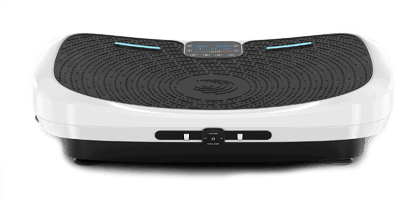
Slim Plus
$0
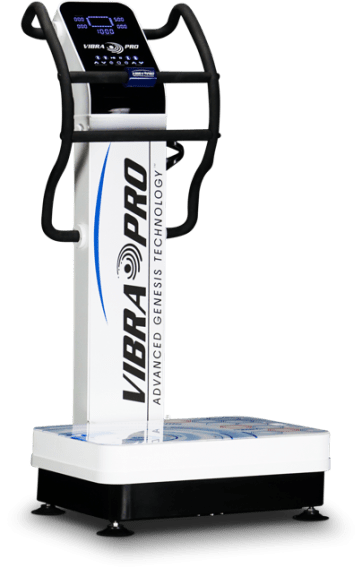
Genesis Kinetic
Starts from $3295
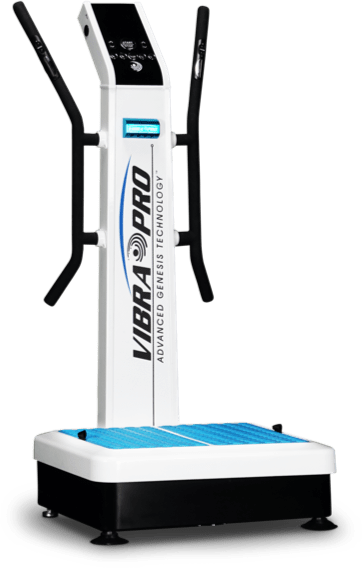
Genesis Kinetic Sport
Starts from $3295
Background Research and Development
With the advent of the first applications of whole body vibration machines utilized for the space programs in the 1960s, we have seen the further development and improvement of these machines, to the point now, where vibration machines have become highly sophisticated technological and mechanical marvels. Early vibration plate machines were crude units and may actually have caused more harm than good. We now recognize that there are many different forms of vibrations, and in fact, the term vibration refers to a mechanical phenomenon where oscillations occur around an equilibrium point. When discussing vibration machines we are really discussing waves and wave patterns. Waves are oscillations accompanied by a transfer of energy, and that is exactly what we want in a vibration machine, we want to transfer energy from a vibration platform to various points in the body. Our bodies become the medium for the energy of the wave.
There are many different types of wave patterns, some are desirable for our purpose and others are actually undesirable. There are several factors in a wave that is of importance to us, such as the frequency of the wave, or the amplitude of the wave, and the direction of the wave. Other important factors come into play as well, such as the steadiness of the wave frequency, that is to say, are all the waves exactly the same (same amplitude, same frequency, same direction), or are some waves emanating from the vibration machine different than others. Consistency may be one word to describe this. Some specific waves can be very dangerous to the human body. In fact, various organs in the body have different densities and these parts respond differently when subjected to the same energy wave. The CDC and OSHA both have very specific guidelines about the type, frequency, and duration of acceptable vibrations that workers may be subjected to.
When all the above factors are taken into consideration, it’s easy to see that designing and manufacturing a proper whole body vibration machine has to account for a great deal of science and research. Much of this research is difficult if not impossible without very specific scientific testing equipment, and the brightest highly educated technical staff, which is very costly. So it’s completely understandable that only the larger manufacturing firm such as Vibra Pro Fitness can allocate the funds necessary to properly design a vibration therapy machine that functions as desired. With our multi-motion machines, the mechanics themselves are very difficult to manufacture. Our vibration machines have 2 motors and 2 completely independent drive systems that interact with each other in very specific ways, without transferring or altering the waves of energy produced by any single motor. There are many copycat vibration machines on the market that attempt to copy the appearance of Vibra Pro’s products but they do not perform anywhere near a Vibra Pro vibration therapy machine.
